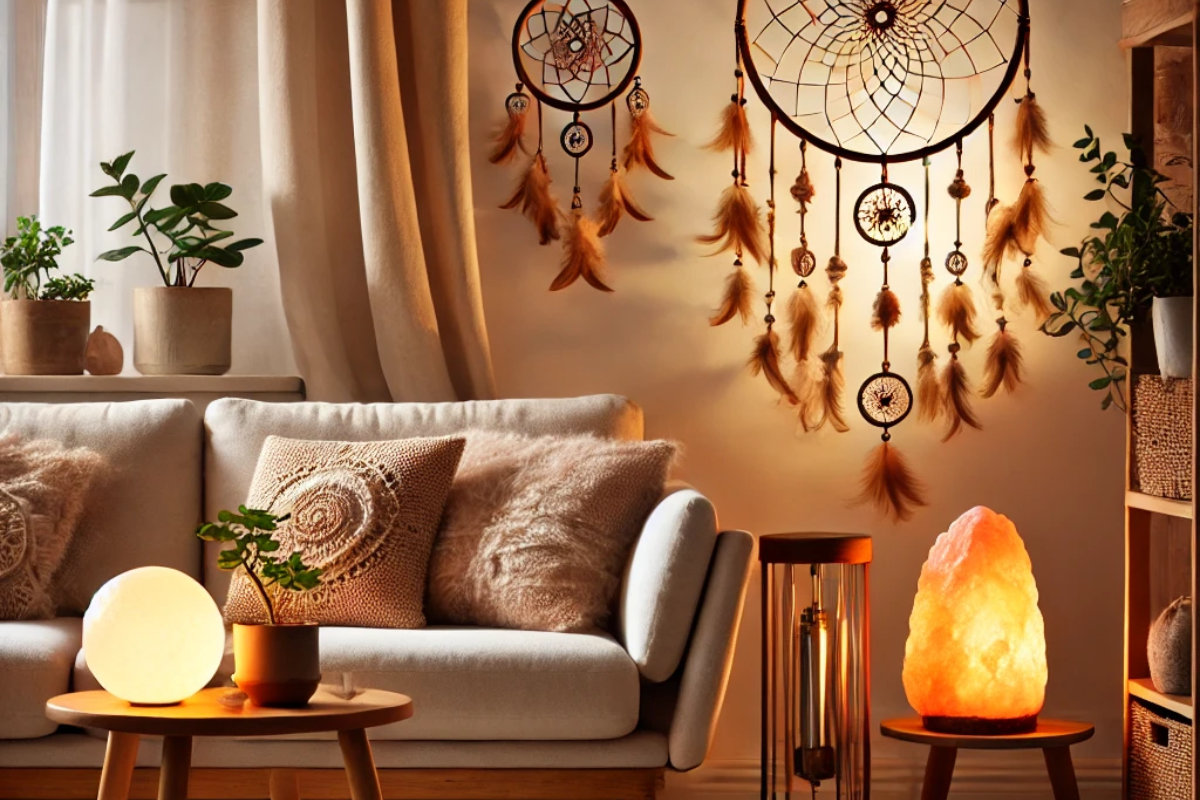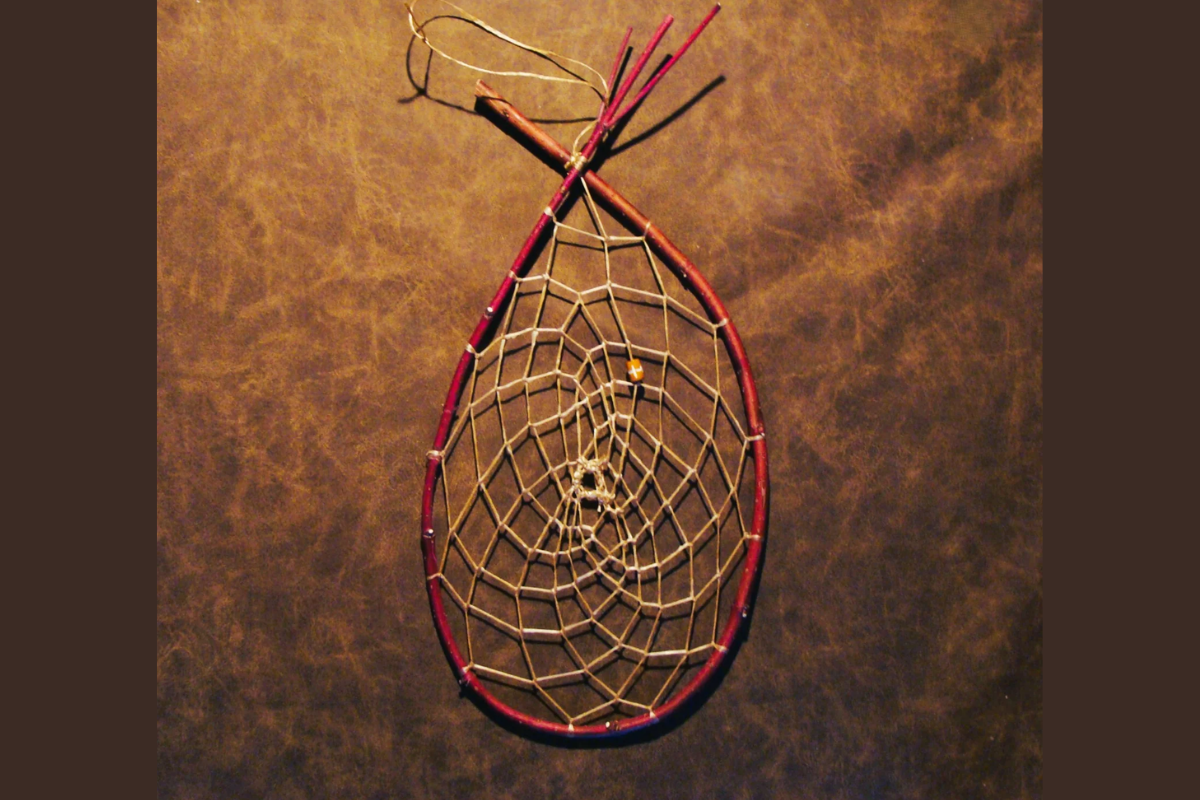Dream Catchers, Money Plants, and More: Do Home Decor Beliefs Hold Any Truth?

Home décor has long been associated with meanings beyond aesthetics, often believed to influence well-being, luck, and protection. These symbolic beliefs originate from ancient traditions and cultural practices aimed at bringing harmony and balance into living spaces. Over time, these beliefs have evolved, blending folklore with personal perception.
Interestingly, research shows that the way we assign meaning to these objects can have a real impact on our emotions. Even without scientific proof, simply believing that something brings positive energy can make us feel more comfortable and satisfied in our surroundings. The question is—how much of it is rooted in tradition, and how much is just in our minds?
Let’s explore the origins, myths, and facts behind some of the most popular home décor items and uncover what truth they might hold.
Dream Catchers: Protection or Just Decoration?

Origin
Dream catchers trace their origins to the Ojibwe (Chippewa) tribe, a Native American group from the Great Lakes region. Traditionally, they were crafted to protect infants by filtering dreams. The web-like structure, made using willow hoops and sinew, was believed to trap bad dreams or harmful spirits, allowing only positive dreams to pass through.
These protective charms were hung over cradles or sleeping areas. As the Pan-Indian movement grew in the 20th century, dream catchers became a symbol of Native American culture and unity, adopted by other tribes and gaining broader cultural significance.
Common Myths
A widespread belief is that hanging a dream catcher over a bed ensures peaceful sleep by warding off nightmares. Additionally, some people believe that dream catchers possess spiritual properties that attract positive energy and dispel negativity from a space. However, these interpretations vary across different cultures and modern users.
Scientific Insight
There is no scientific evidence supporting the idea that dream catchers can influence sleep quality or prevent nightmares. Experts in psychology suggest that their perceived effects are likely due to the placebo effect. Believing that an object can offer protection or comfort can create a psychological sense of safety, which may indirectly improve sleep. In essence, dream catchers do not have any proven physical or spiritual properties, but the belief in them can provide emotional reassurance.
Verdict
While dream catchers do not have any scientifically verified ability to affect sleep or dreams, they carry profound cultural significance for Native American communities. Their value lies in the symbolic meaning they hold and the comfort they offer to those who believe in their power.
However, it’s important to respect their origins and cultural significance, especially given concerns about commercialization and cultural appropriation. Dream catchers may not scientifically ward off nightmares, but they serve as a reminder of the deep traditions and beliefs of the people who created them.
Money Plants: Fortune or Folklore?
Origin
Money plants, particularly Pachira aquatica (commonly known as the Money Tree) and Epipremnum aureum (known as Devil's Ivy or Pothos), have deep roots in various cultures, especially within Asian traditions. In Chinese culture, the Money Tree is associated with prosperity and positive energy, often linked to Feng Shui practices that aim to harmonize individuals with their environment. The braided trunk and lush foliage of the Money Tree are believed to symbolize financial growth and abundance.
Similarly, the Pothos plant is revered in Feng Shui for its ability to attract wealth and positive energy. Its heart-shaped leaves and vigorous growth make it a popular choice for indoor décor, symbolizing perseverance and prosperity.
Common Myths
There is a common belief that keeping a money plant at home or in the office attracts financial success and positive energy. In Feng Shui, the southeast corner of a space is associated with wealth and prosperity, and placing a money plant in this area is thought to amplify these effects. This practice stems from the idea that the plant’s lush, green leaves symbolize growth and abundance, making it a popular choice for those seeking to enhance financial well-being and create a harmonious environment.
Scientific Insight
While there is no scientific evidence directly linking money plants to financial gain, studies have shown that certain indoor plants can improve indoor air quality. For instance, Epipremnum aureum has been found to absorb pollutants like formaldehyde, benzene, and carbon monoxide, contributing to a healthier indoor environment.
A healthier environment can enhance well-being and productivity. Research indicates that improved indoor air quality can lead to better cognitive function and reduced symptoms of discomfort, potentially fostering better work performance.
Verdict
The belief that money plants bring wealth is deeply rooted in cultural practices and traditions, particularly within Feng Shui. While these plants may not directly influence financial success, they offer tangible health benefits by improving indoor air quality. Additionally, the presence of greenery indoors can enhance mood and productivity, indirectly contributing to a more prosperous and harmonious living or working environment.
Wind Chimes: Harmony or Noise?
Origin
Wind chimes have a rich history across various cultures, serving both practical and spiritual purposes. In ancient China, they were crafted from materials like bone, wood, bamboo, and shells, and were believed to ward off evil spirits and attract benevolent ones. These chimes, known as "feng-lings," were often hung from the eaves of temples, shrines, and pagodas to promote peace and harmony.
Similarly, in ancient Rome, bronze wind chimes called "tintinnabula" were hung in gardens and courtyards. They were believed to protect against malevolent spirits and often featured symbolic imagery to enhance their protective powers.
Common Myths
A prevalent belief is that hanging wind chimes in specific areas of a home can attract positive energy and harmony. In Feng Shui, for example, placing wind chimes in certain locations is thought to enhance the flow of "chi," or life energy, thereby bringing good luck and dispelling negative forces.
Scientific Insight
The gentle, melodious sounds produced by wind chimes can have a calming effect on the mind and body. Studies indicate that natural, ambient sounds, like those from wind chimes, can reduce stress levels by up to 68%. These soothing tones mimic nature's rhythms, helping to lower cortisol levels and naturally alleviate anxiety.
Additionally, sound therapy practices utilize instruments like wind chimes to promote relaxation and mindfulness. The harmonious sounds can help balance energy, soothe the mind, and create a serene atmosphere conducive to stress relief.
Verdict
While the spiritual and metaphysical aspects of wind chimes are rooted in cultural beliefs and traditions, their ability to produce calming, soothing sounds is well-documented. The gentle tones can enhance a peaceful home environment, reduce stress, and promote relaxation. Therefore, regardless of one's belief in their spiritual significance, wind chimes can serve as a valuable addition to any space seeking tranquility and harmony.
Crystals: Energy Amplifiers or Decorative Stones?
Origin
Crystals have been integral to various cultures throughout history, revered for their perceived spiritual and healing properties. In ancient Egypt, crystals such as lapis lazuli, turquoise, and carnelian were fashioned into jewelry and amulets, believed to offer protection and health benefits. These stones were also placed in tombs to safeguard the deceased in the afterlife.
In India, the use of crystals is intertwined with Ayurveda, an ancient system of healing. Different stones were aligned with specific chakras, the energy centers of the body, to promote physical and emotional well-being. For example, red stones like garnet were associated with the root chakra and used to ground energy, while blue stones like lapis lazuli were linked to the throat chakra, aiding communication.
Similarly, in ancient China, jade was highly prized and thought to have potent therapeutic properties. The Chinese believed that using crystals could help to maintain the body’s energy balance and advance health.
Common Myths
A prevalent belief is that crystals emit specific energies capable of balancing emotions, healing physical ailments, and attracting wealth. For instance, amethyst is thought to calm the mind, rose quartz to promote love, and citrine to bring financial prosperity. These associations have led to the widespread use of crystals in modern alternative healing practices, meditation, and as talismans for good fortune.
Scientific Insight
Scientific investigations have not substantiated claims that crystals possess inherent healing energies. A study conducted by Christopher French at Goldsmiths, University of London, found that the effects reported by individuals using crystals could be attributed to the placebo effect. Participants experienced sensations and improvements because they believed in the crystals' powers, not due to any measurable energy emitted by the stones.
The placebo effect demonstrates that belief and expectation can lead to real psychological or physiological changes. In the context of crystal healing, if individuals perceive benefits from using crystals, these effects are likely due to their belief in the treatment rather than the crystals themselves.
Verdict
While crystals hold significant symbolic and cultural value and can provide emotional comfort to those who believe in their properties, there is no scientific evidence supporting their efficacy as healing tools.
Their benefits are likely psychological, stemming from the placebo effect. Nonetheless, incorporating crystals into personal practices can serve as a source of inspiration and solace, enriching one's spiritual or emotional life.
Salt Lamps: Purifiers or Aesthetic Glow?
Origin
Himalayan salt lamps originated from the Khewra Salt Mine in Pakistan, one of the oldest and largest salt mines in the world. These lamps are carved from pink or orange-hued salt crystals mined from this region. The popularity of Himalayan salt lamps began to rise in the early 2000s, driven by claims from alternative health practitioners about their potential to improve air quality and promote well-being.
The idea that these lamps emit negative ions, which supposedly cleanse the air and enhance mood, has been a significant factor in their widespread appeal, particularly in wellness and home décor markets.
Common Myths
Himalayan salt lamps are widely believed to offer various health benefits, contributing to their growing popularity. Many proponents claim that these lamps improve air quality by neutralizing pollutants and allergens, making indoor spaces healthier. Another common belief is that they emit negative ions, which are thought to enhance mood, boost energy levels, and create a sense of well-being.
Additionally, it is often suggested that salt lamps promote better sleep by reducing electromagnetic radiation and fostering a calming environment. These perceived benefits have played a significant role in the commercial success of Himalayan salt lamps, with many consumers purchasing them for their alleged ability to improve both physical and mental health.
Scientific Insight
While salt lamps may emit negative ions when heated, studies indicate that the concentration of these ions is too low to produce any measurable effect on air quality. Unlike ionizers, which are designed to generate a significant amount of negative ions, salt lamps lack the necessary power to meaningfully alter indoor air composition.
However, their soft, amber glow creates a relaxing and cozy ambiance, which can indirectly support mental well-being by fostering a calm environment. Research on lighting shows that dim, warm-colored lights in the evening may help promote relaxation and better sleep by reducing blue light exposure, which can interfere with the body’s production of melatonin.
Verdict
While Himalayan salt lamps do not live up to the health claims regarding air purification and negative ion emission, they do offer tangible benefits in terms of ambiance and mood enhancement. Their calming glow can contribute to a more peaceful home environment, making them a popular decorative item rather than a scientifically proven health tool.
Why People Believe in Symbolic Home Décor
Belief in symbolic home décor items is influenced by psychological comfort, the placebo effect, and cultural traditions.
Psychological Comfort
Incorporating symbolic décor items into living spaces can provide individuals with a sense of control and comfort, especially in uncertain times. These objects serve as tangible representations of personal beliefs or aspirations, helping to create an environment that feels safe and reassuring. For instance, the presence of certain colors, textures, or familiar items in home décor can significantly impact emotional well-being, fostering a sense of security and relaxation.
Placebo Effect
The belief in the power of symbolic décor can lead to real emotional benefits, even if the objects themselves lack inherent efficacy. This phenomenon, known as the placebo effect, demonstrates how personal conviction can influence psychological states. For example, individuals who believe that certain amulets or decorative items bring good luck or protection may experience increased confidence and reduced anxiety, attributing positive changes in their well-being to these objects.
Cultural Influence
Many beliefs associated with symbolic home décor are deeply rooted in cultural traditions and are passed down through generations. Cultural practices and rituals often involve the use of specific objects believed to hold particular powers or significance.
These traditions shape individual perceptions and reinforce the symbolic value of such items within a community. For instance, the use of talismans or specific decorative elements in homes can be linked to cultural beliefs about health, prosperity, or protection, illustrating the profound impact of cultural heritage on contemporary décor choices.
Home décor is personal. These items, whether symbolic or purely decorative, shape a space that feels uniquely yours. Dream catchers, money plants, crystals, and wind chimes each carry stories—some rooted in ancient traditions, others cherished for their beauty or sentimental value.
Belief aside, if something offers comfort or a sense of calm, its worth is undeniable. The warm glow of a salt lamp or the gentle rustle of wind chimes might not transform your life, but they can make your space feel a little more peaceful. And in today’s fast-paced world, that small sense of peace matters.
At its core, your home is about creating balance and comfort. These objects—whether believed to bring fortune or chosen for their charm—serve a purpose. If they brighten your day, ease your mind, or simply make your space feel more welcoming, that’s reason enough to keep them close.
